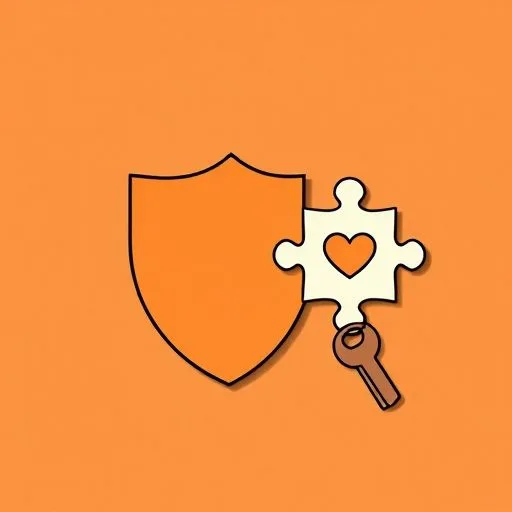
You’ve seen it, haven’t you? Just before bed, while you’re washing dishes, your child turns to that little device instead of your shoulder. Asks the AI for a story when they usually crawl into your lap. Relief washes over you for a split second… then that tiny ache. We’ve watched that moment happen quietly across our home, and I want to share what I’ve learned with you, not as an expert but as someone walking this path too. How keeping kids safe with AI isn’t about fear – it’s about seeing what’s really happening in their hearts.
Why Kids Share Secrets with Screens (Without Feeling Heard)

We’ve all felt it – that jolt when you catch them whispering to the tablet like it’s a late-night friend. But here’s what hit me the hardest: it’s not that they love the machine. It’s that for their little hearts, these moments feel so safe. No tired sighs from long days. No ‘we’ll talk later’ when the laundry pile calls. Just someone who’ll listen to their ‘secret recipe for dragon soup’ without checking the clock.
I remember watching our oldest ask the AI about dreams after thunderstorms. The device gave that same flat ‘storms happen’ answer we’d given. But they kept talking anyway. It made me realize: sometimes kids aren’t seeking perfect answers. They’re practicing being heard until they feel brave enough to come to us with bigger things. That moment isn’t about the tech – it’s about them finding their voice in their own time.
What if we stopped worrying about the screen stealing their trust? Instead, let’s honor that courage in them. When they share something they told the AI later, try ‘I’m glad you had someone to listen’ instead of ‘why didn’t you tell me?’. You’d be amazed how that tiny shift makes them turn to us more. That quiet strength we all admire in moms? It works in these small moments too – the patience to let them build trust at their own pace.
The Safety Shift: From Blocking to Bonding

Honestly? Setting up filters made me feel safer at first. Like I’d built a digital fence. But real safety hit me differently – during dinner when they casually mentioned, ‘Siri said scary things aren’t real’. My blood ran cold until I saw it: this wasn’t about bad advice. It was about them testing what ‘real’ even means.
We stopped the ‘never talk to Alexa!’ lectures. Instead, when devices give odd answers, we say ‘Let’s figure this out together’. Last week, when an AI suggested eating clouds for dessert, we turned it into kitchen fun – ‘What makes that silly? Could we make cloud pancakes instead?’. Suddenly it wasn’t dangerous anymore. It was practice for spotting weirdness in real life – with us right there coaching them.
The real danger isn’t the AI giving wrong answers. It’s us missing these teaching moments because we’re too busy being gatekeepers.
Try watching their faces when the AI responds. You know that little look they get when something doesn’t quite add up? That’s your golden moment right there. ‘What feels off here?’ you ask while ruffling hair. In those seconds, you’re not just teaching safety – you’re showing them you trust their judgment. And that builds far stronger protection than any app ever could.
Small Habits That Build Real Digital Confidence

We tried so many ‘rules’ – screen-free zones, time limits, the whole playbook. What finally stuck wasn’t a rule at all. It was swapping ‘What did you ask the robot?’ for ‘Who made you laugh today?’. If it’s the AI, we say ‘Tell me that joke!’ slowly turning the screen into shared stories instead of secrets.
Our bedtime ritual changed too. Before lights out, we now ask ‘What was the bravest thing you felt today?’ Whether they told the tablet or us. And here’s what surprised me: they started bringing AI conversations into this space naturally. ‘I asked the bot about brave spiders… but I think Daddy’s right about shoes first’. That tiny phrase – ‘I think Daddy’s right’ – showed me they’re weighing all voices, including ours.
Most powerful change? When devices give questionable advice, we don’t shut them down immediately. We say ‘Hmm, let’s check what Mommy thinks’. Not because Mommy knows best, but because it shows them: some questions deserve human warmth. You’ve probably felt this too – that instinct to protect their hearts more than their screens. Those quiet choices? That’s your parenting superpower working right there.
The Anchor in All This Noise

Somewhere we got it twisted: thinking AI safety meant constant vigilance. But what matters most happens when the screens go dark. Like last Tuesday, when our youngest had that nightmare. No robot. Just tiny feet running down the hall, burrowing into our shoulders. In that moonlit moment, I finally got it – no algorithm replicates the warmth of your hand on their back as they calm down.
That’s the real safety net. Not the filters we set, but the trust we build. The moments when we choose to put the phone down when they enter the room. When we respond to ‘Look what I did!’ with eye contact instead of ‘just a sec’. These are the invisible threads holding them close while tech buzzes around us.
So if you felt that ache when they turned to the screen first? Let it remind you of something beautiful: what they truly seek isn’t in the device. It’s in the safety of being known. The next time it happens, try joining them at the screen. ‘What story was that?’ you ask softly. Let that moment become connection instead of competition. Because at the end of all these digital waves, what they’ll remember isn’t the apps – it’s how your presence made them feel. And that quiet strength you carry? It’s their truest protection – the one thing no algorithm can ever replicate.
Source: FTC scrutinizes OpenAI, Meta, and others on AI companion safety for kids, Zdnet, 2025/09/12 19:14:00
